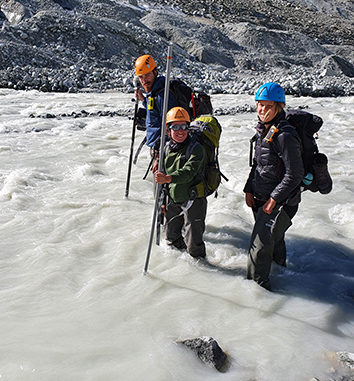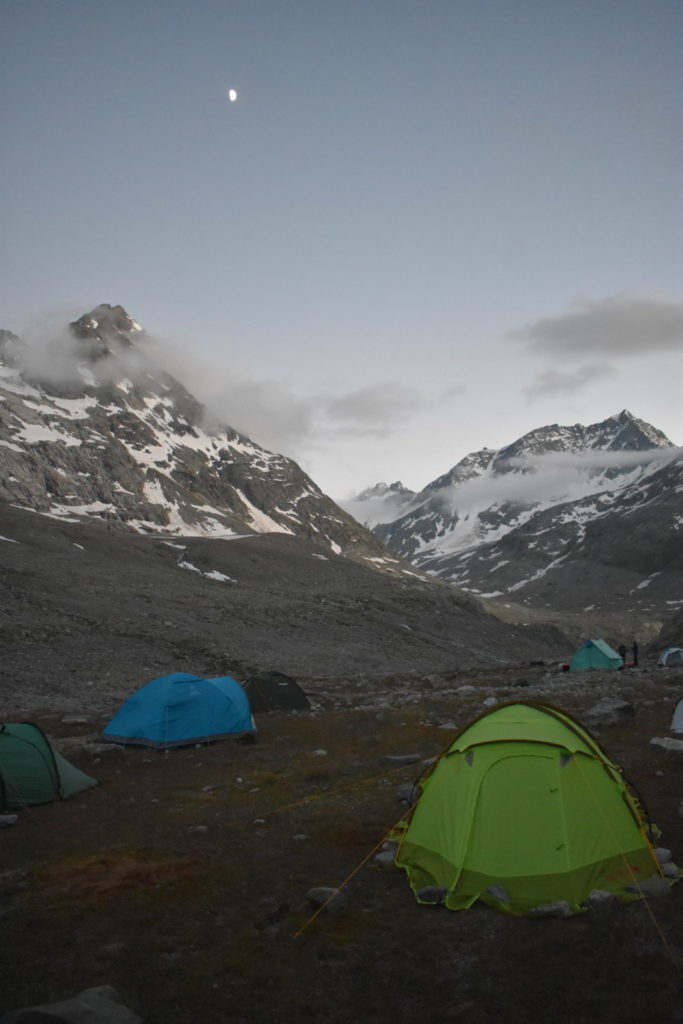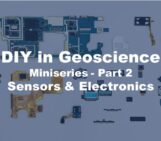
Imagine it is your first time going on a field trip. After spending hours in the lecture theatre, you are excited to get outside and see those environmental processes that so far you have only seen in graphs and figures. You get off the bus, and the first thing your professor says is: “people less comfortable with climbing on the rocks can just take the notes”, while looking at you and your female classmates. Wouldn’t that be discouraging? Well, it should not let you down!
Fieldwork and field courses are an integral part of geoscience and environmental study programs. Many students will likely agree with us that field classes are the most memorable part of their studies. During field trips, students create new bonds, and finally really understand what they are studying. But fieldwork can also be excluding, intimidating, overwhelming, and even frightening.
Earlier this year, during a workshop on inclusive fieldwork led by Prof. Ann Rowan from the University of Sheffield (now University of Bergen), we discovered that many choices students make about their career are in fact heavily impacted by whether a program involves fieldwork or not. Intrigued, we discussed it with a few students in the Faculty of Geosciences and the Environment at the University of Lausanne to understand some problems and the needs of students.
The old image of the Alpinist Geoscientist
Field courses can be excursion-type, where objects of interest are solely visited and looked at, or they can be highly practical, including smaller student research projects where field data sampling and high physical activity are required. It is mostly the latter that may scare students who have never worked in the field before, causing them to drop out of a course before they have even made it to the field.

For many students, fieldtrips and field courses are the most memorable parts of their studies. Field course in Norway. Photo: Floreana Miesen
Eliminating this initial drop-out factor and making sure all students who are interested in the subject matter can follow a program is a challenge that is yet to be overcome. The prerequisites that study programs presumably expect from a typical geoscience student all too often draw on the traditional narratives of the adventurist explorer and historical male-dominance in the field. It is still extremely common among course leaders to assume that everyone is physically fit and ready to go for long hikes in the mountains, carry heavy loads or dig deep holes. Rarely is a field trip adapted for diverse levels of physical ability and experience. After all, not everyone who studies Geoscience is a mountaineer, or has a basement full of bulky duffle-bags packed with smelly climbing shoes and expensive high-tech outdoor clothing.
The narrative of the adventurist explorer may, however, also be supported in part by the students themselves. Field courses may be seen as the perfect stage to brag about one’s achievements in outdoor sports. Students who have chosen to study the environment for a much wider range of reasons may feel intimidated by their classmates’ stories and may fear that the same level of experience is expected of them. Perhaps they will end up doing things that are beyond their capabilities and that will put them at risk.
Unfortunately, adventurism and bragging don’t always stop at the student level. It is common for senior leaders to share anecdotes from the “old days”, when fieldwork was seemingly only possible due to pure bravery, endurance, and strength. Don’t complain, we had to cope with worse, may be the underlying message of some of these adventure stories. Field leaders who walk too fast for parts of the group will give disproportional advantage to those who are able to keep up with them. In the worst case, those who struggle to catch up will miss out on parts of the course content, still hiking whilst the lecturer has already begun to explain a concept or feature.

The pace of an excursion should allow the learning content to be focussed upon, rather than maximising the walking distance. Field course in Argentina. Photo: Nikola Schulte-Kellinghaus
When experience and financial issues become a barrier
Some project leaders tend to open their field-intensive master projects, internships, assistant positions etc. only to students with mountaineering experience, or even make it a prerequisite that the candidate is a trained mountain guide. Experience in expensive outdoor sports is thus turned into the entry ticket to the best career path in academia, stripping less experienced students of the possibility to advance in their field or to gain relevant experience in the first place.
While one could argue that some fieldwork simply requires very specialized training, institutes should make sure that either such training can be arranged without additional cost for the students or that enough alternative projects are available that don’t require training but which provide equivalent scientific learning outcomes.
Field trips can pose immense financial burden on students. If faculties don’t provide financial support, students may find themselves working extra hours to be able to afford the high cost of trips to exotic destinations. At the same time, not having or not being able to afford the right equipment, such as sturdy hiking boots, can put students at risk in difficult terrain. Teaching institutes should have systems in place to support students financially or lend out outdoor equipment to those who cannot afford to buy their own.
This would go along with fieldwork specific specialist clothing and safety gear such as overalls, waders, work gloves and goggles that are commonly provided by the teaching institute. However, these are often only available in standard sizes, or most often only in men’s sizes. Safety equipment that is too small or too large can even have the opposite effect, making a person less able to move safely on the terrain.

Wading a glacier-fed stream can be fun, but getting wet feet sucks: Safety equipment should be available to fit a wide range of body sizes. Fieldwork in Switzerland. Photo: Didier Nydegger
Lack of preparation and communication
Many of the students we talked to said they often lacked guidance and communication on what is expected of them and how to prepare themselves for the field.
“Before my first field camp, I was super excited, looking forward to learn more about alpine geomorphology. But I could see that this camp was stressful for some friends. There were questions about the physical condition, equipment, but also more intimate questions. These unknowns have contributed to some students choosing a ‘fieldless’ option in the faculty.”
Naturally, academic staff leading field courses are not automatically trained guides or travel agents. Often, they lack time or may find it overwhelming to prepare a comprehensive field guide on the logistics and safety of a field course.
Arrangements to take care of toilet needs, menstruation, taking medicine, child care, rest and private “off-time” etc. are rarely accounted for in field schedules.
“That day, I was working as an assistant on the glacier with a new team, and I needed to empty my menstruation cup. I was stressed because first of all it is difficult to find a corner out of sight on a glacier, secondly I didn’t dare to say why I was moving away from the group when for safety reasons we had to stay together and finally, “red colour” on ice shows. So I waited and waited until it was no longer bearable. I understood that there is no shame and that it is better to say it, before feeling too bad. However, if these topics are discussed before the field by the professor (or the person in charge of the field), I would be more confident to discuss the topic. Moreover, later I learned that many students are afraid of such situations, and simply make sure they don’t have their period during the field courses by taking pills.”
Students may be advised to raise concerns or questions, however, some will struggle to talk about such sensitive issues, especially if hierarchical structures between students and professors are strong. Standardising what needs to be discussed during a pre-field briefing could greatly improve the wellbeing and safety in the field. Students may also be concerned that less involvement in physical activities may have a negative impact on their course grades.
“During our soil science field course we had to dig holes to excavate soil profiles. I don’t know if I could have got the spade and auger in and out of the ground properly. At that time, I was just happy that there were also strong boys in our group and so it was not a big deal for me. I then simply communicated that I didn’t see myself in a position to take on this task and could do something else instead. A fellow student later told me that she was glad that I had said that because she had already played out in her head how she could get out of the situation without showing weakness. I was quite concerned about that at the time. It might have been helpful to raise the issue and talk about the physical demands of fieldwork beforehand, and that it is not always possible to do every job. This might have opened a door for those who did not feel comfortable.”

Enough privacy, sleep and time for processing new experiences are crucial to reduce mental stress during field courses. Field camp in Switzerland. Photo: Floreana Miesen
Inclusivity, an integral part of field safety
Inclusivity is much more than just saying that everyone is welcome to join. Creating inclusive field courses requires proactive revision of existing schedules and practises. Many fieldwork intensive programs do not offer arrangements that are accessible to students with physical or mental disabilities or traumas. Mental health and lack of inclusiveness are safety concerns. Rarely does a risk assessment for fieldwork consider mental health and discrimination as a safety impeding factor.
Experiences of sexual assault and discrimination before or during fieldwork is one of the greatest risk factors for students, with long-lasting effects on mental health and career development. Members of the LGBTQ+ community can be particularly at risk in countries with discriminatory sexual orientation laws. But even without such laws, students may struggle to feel accommodated by the binary sleeping arrangements of the field course.
“One morning a friend asked me ‘do you think I can write to the teacher to ask if I can sleep in the men’s room?’ Teachers know him as a woman, because on official documents, he is a woman. He was afraid that this request would be refused and that it would be frowned upon by the teachers. For several weeks, this situation stressed him a lot. The request would have been much simpler if the briefing mail for the field had contained the option to tick the preference for sleeping (men, women, mixed or single room). Today he tells me that he had the courage to talk about the situation, because we were a small class and we were starting our 2nd year of Bachelor’s degree. In the first year and with a bigger class, he wouldn’t have dared. This situation made me think that anyone who does not fit into societal norms in Switzerland (gender, disability, religious belief, etc.) must have the courage to come forward. It’s not easy to go and talk to professors. Just like the question about dietary preferences in the invitation for the field camp, these questions should be addressed, they would show the openness of the teacher to these questions, but also take pressure off the students.”
In conclusion, many hurdles still need to be cleared so that all students can benefit from the positive effects of field courses in enhancing their learning experience and that no one gets left behind. A systematic approach to changing faculties’ policies and culture on teaching in the field will open the door to those who never felt invited in the first place. The Geoscience community could much benefit from a greater diversity of young talents and aspiring field scientists. Ideas on how to achieve this will be given in our upcoming blog post.
Acknowledgements
We would like to thank all the students and PhD students who shared their experiences openly with us. Many thanks also especially to Dr. Ann Rowan (University of Sheffield / University of Bergen) for the great workshop and to Dr. Georgina King (University of Lausanne) for the precious professor-student exchange about this topic.
Edited by B. Schaefli





Vincent MERK
Good point! Inclusion, psychological safety and sense of belonging leading to wellbeing also count outdoors in nature facing many risks, and not only in the coziness of the international classroom!
Simon M. Hutchinson
Really interesting – thank you. You might be interested in this project which aims to support inclusion in the field work aspects of environmental education from its root and to grow this why it’s called cultivate!
https://www.cultivate-project.com/